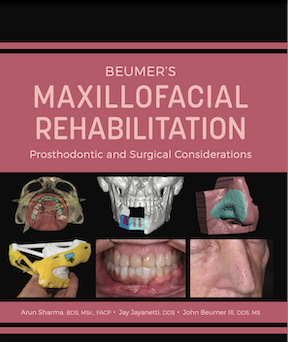This presentation addresses several questions pertinent to patient selection and treatment planning for fixed dental prostheses. What is the periodontal health and tooth stability (mobile or stable?; C/R ratio; root length / form; Ante’s Law provides a conservative guideline)? What occlusal forces are present? What type of retainers will be used? (tooth condition / form; and resistance form needs)? What are the different design possibilities regarding number of units? How many teeth will serve as abutments? Can metal be visible or does the prosthesis need to be tooth colored? These questions are addressed in this presentation.
Transcript
- 1. Charles J. Goodacre, DDS, MSD Professor of Restorative Dentistry Loma Linda University School of Dentistry This program of instruction is protected by copyright ©. No portion of this program of instruction may be reproduced, recorded or transferred by any means electronic, digital, photographic, mechanical etc., or by any information storage or retrieval system, without prior permission. Treatment planning & fixed partial denture (fixed dental prostheses) designs
- 2. Philosophy of Tooth Replacement • Today, because of the high survival rate of dental implants they are often the option of first choice. • However, there are situations where FPDs are still used because implants cannot be placed, a patient chooses not to have implants, or a FPD has been successful for many years and now needs replacement.
- 3. Key FPD Design Questions • What is the periodontal health and tooth stability (mobile or stable?; C/R ratio; root length / form; Ante’s Law provides a conservative guideline) • What occlusal forces are present? • What type of retainers will be used? (tooth condition / form; and resistance form needs) • What are the different design possibilities regarding number of units? • How many teeth will serve as abutments? • Can metal be visible or does the prosthesis need to be tooth colored?
- 4. Missing Maxillary Central Incisor • No mobility; normal occlusal forces • How many units (2; 3; 4; 5; 6)? • Which teeth will serve as abutments?
- 5. Any Challenges Present?
- 6. Missing Maxillary Lateral Incisor The first choice today, when the adjacent teeth are intact, is a dental implant
- 7. When a fixed partial denture will be used, one of the common procedures would be to prepare the central incisor and canine for a 3-unit fixed partial denture
- 8. A 2-unit cantilever design was used due to the lack of alignment between the abutment teeth
- 9. A Resin Bonded Prosthesis (Maryland Bridge) is an option for young patients where an implant will be used but is not indicated now due to age & future growth. There is minimal or no tooth preparation but a proximal wrap- around design is used.
- 10. When a resin bonded prosthesis will be a definitive long-term prosthesis, the teeth should be prepared.
- 11. Cantilever with Splinted Retainers due to Orthodontic Rotation of Maxillary Canine
- 12. Any Challenges Present?
- 13. Any Challenges Present?
- 14. Both Maxillary Central Incisors Missing
- 15. Why would you use 4 abutments?
- 16. Both Maxillary Lateral Incisors are Missing Cause of missing teeth?
- 17. Any Challenges Present?
- 18. Maxillary Central and Lateral Incisor Missing
- 19. Any Challenges with use of Resin Bonded Prosthesis?
- 20. Maxillary Canine Missing
- 21. Both Central Incisors & One Lateral Incisor Missing
- 22. Oral Hygiene Access
- 23. All Four Incisors Missing
- 24. Any Challenges Present?
- 25. Maxillary First Premolar Missing
- 26. Maxillary Second Premolar Missing
- 27. Maxillary Lateral Incisor & First Premolar Missing
- 28. Any Challenges Present?
- 29. Maxillary Lateral Incisor & Both Premolars Missing
- 30. 2nd Molar Drifted Mesially
- 31. Both Maxillary Premolars Missing
- 32. Maxillary Second Premolar & First Molar Missing
- 33. High Risk – Not Advisable to Use These Designs
- 34. Mandibular Central Incisor Missing
- 35. Mandibular Lateral Incisor Missing
- 36. Mandibular Central & Lateral Incisors Missing
- 37. Any Challenges Present?
- 38. All Mandibular Incisors Missing
- 39. Any Challenges Present?
- 40. Both Mandibular Central Incisors & One Lateral Incisor Missing The one lateral incisor often does not contribute anything and can complicate the treatment
- 41. Mandibular First Premolar Missing
- 42. Mandibular Second Premolar Missing
- 43. Mandibular First Molar Missing
- 44. Mandibular Second Premolar & First Molar Missing
- 45. High Risk – Not Advisable to Use These Designs Mandibular 2nd Premolar to 3rd molar Mandibular Canine to 2nd molar
- 46. Thank You For Your Kind Attention Charles J. Goodacre, DDS, MSD Professor of Restorative Dentistry Loma Linda University School of Dentistry
- 47. v Visit ffofr.org for hundreds of additional lectures on Complete Dentures, Implant Dentistry, Removable Partial Dentures, Esthetic Dentistry and Maxillofacial Prosthetics. v The lectures are free. v Our objective is to create the best and most comprehensive online programs of instruction in Prosthodontics


